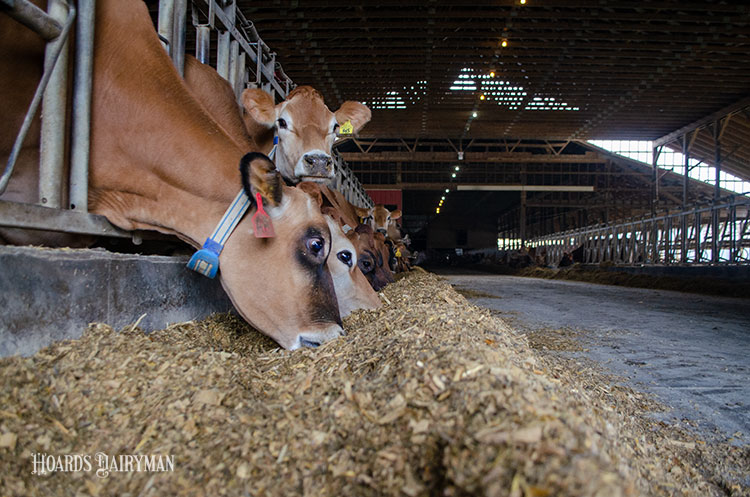
Another metric used to assess forage quality is the undegraded NDF, also known as uNDF. Unfortunately, the interpretation of uNDF differs depending on whether it is expressed on a dry matter (DM) basis or an NDF basis. This means that the assessment of your forage will likely differ depending on how we express uNDF. To highlight this, let’s look at some data from one of our recent studies supported by the National Forage Testing Association (NFTA).
Let’s consider corn leaf blades containing 20.9% uNDF on an NDF basis. This value means that for every 100 units of fiber, 20.9 units will not degrade after 240 hours of fermentation. If we now think about alfalfa leaves containing 43% uNDF on an NDF basis, his new value means that for every 100 units of fiber, 43 units will not degrade after 240 hours of fermentation. Based on this partial analysis, corn leaf blades seem to have better quality than alfalfa leaves.
However, uNDF on an NDF basis provides a limited assessment of forage quality. Let’s now consider the concentration of NDF (DM basis) and uNDF (NDF basis) together. Because corn leaf blades have 54.2% NDF (DM basis) and 20.9% uNDF (NDF basis), the concentration of uNDF on a DM basis is 11.3%. Similarly, because alfalfa leaves have 27.7% NDF (DM basis) and 43% uNDF (NDF basis), the concentration of uNDF on a DM basis is 11.9%.
All this means that even though alfalfa leaves have more uNDF than corn leaf blades (43.5 uNDF versus 20.9 uNDF; NDF basis), both forages have similar concentrations of undegradable fiber when compared on a DM basis (11.9% versus 11.3%).
Even though these terms may be confusing, we must understand these concepts, especially when interpreting a commercial forage laboratory report or reading the summary of a plot study. After all, we can arrive at unwanted conclusions if we do not determine the complexities of fiber degradation.








